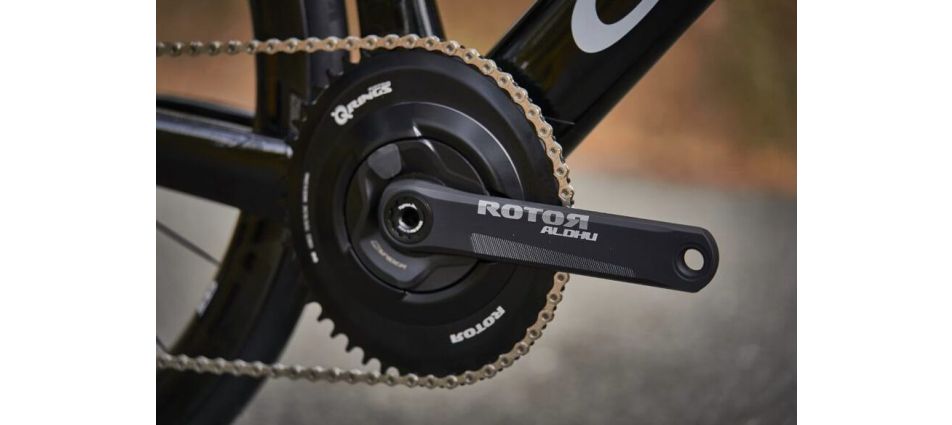Optimum Chainring Position – OCP
Today we are going to talk about a concept that has revolutionised the customisation of oval chainrings: Optimum Chainring Position or OCP, an oval chainring technology exclusive to ROTOR that allows you to adapt your Q Rings to your pedalling style.
Offering multiple optimum positions per chainring model, you will be able to obtain the ideal configuration for you pedalling pedalling style by simply using an Allen key. And, as always, you can find specific oval chainrings according to your discipline - road, triathlon or MTB.
What is optimum chainring position?


The OCP system in oval chainrings or Q rings allows you to synchronise the most oval part of the chainring with you power phase, allowing you to achieve maximum performance in each pedal stroke. This way the chainring adapts to each cyclist´s pedalling style, and not the other way around, since an oval chainring lacking the means to be fitted to each user would be meaningless.
For comparison, we can understand it with a very simple example: it´s like the raising and lowering the saddle on a bike, which allows it to be adapted to any user - while if the saddle height were fixed, it would be restricted only to users who use that exact saddle height.
How to get the best fit
Although at ROTOR we are big proponents of compatibility, so our Q Rings are compatible with almost all the cranks on the market, our range of INpower and 2INpower power meters, as well as the new INspider, will allow you to accurately learn your Optimum Chainring Angle, and thus adjust the OCP of your Q Rings effortlessly.
All this is thanks to our TORQUE 360º technology, which measures how force is applied throughout the 360º of pedalling, and the ROTOR® Power app, which allows you to analyse all the data after training.
Is there an adjustment period?
If you´ve been using round chainrings, there are 4 transition stages you´ll go through to accustom your leg muscles to the way the Q rings work. Depending on your discipline, we recommend that you start at the following chainring positions before working an optimisation:
- Road: position 3
- Triathlon or Time Trial: position 4
- MTB: position 3
Stage 1
This is a period of mental training where we should maintain our usual gearing and try to move away from circular pedalling while we get used to the new chainrings. We may notice some jerkiness at the beginning, but after an hour of cycling we´ll have forgotten that we are using an oval chainring.
Stage 2
Here we look for ease of pedalling, so we should avoid excessively demanding changes of pace. You may feel some fatigue since the inside of your quads will have to work more, but this will just be regular muscle soreness. You just have to keep going without overdoing it. This period of muscle development can last around 10 days.
Stage 3
This is the muscle adaptation phase, where pedalling gets easier and smoother and we can increase the intensity. This is also when the weakest muscles that we didn´t use before begin to catch up with the stronger ones, and the muscle soreness begins to disappear. Once the muscle ache is gone, it is recommended that you continue riding regularly without overexerting yourself for at least 1 week.
Stage 4
This is finally the point where you can start to customise your optimum chainring position (OCP). Now that you have developed and balanced out the necessary muscles, you can ride in tougher conditions and enjoy the benefits of feeling fresher and getting better rest at the end of each ride. So, this will be time to experiment and see with which OCP you are most comfortable at maximum intensity, which is where you´ll notice that extra edge from using the right OCP. If you have one of our power meters, you simply have to check the ROTOR® POWER APP to see what your OCP is and adjust accordingly.
As far as ease of pedallinh, you´ll be at your previous level at least, but with sightly lower heart rate at similar intensities. This is an indicator that our energy and our effort is being applied in a more optimised way.
Adjusting your OCP according to your pedalling characteristics will maximise the advantages of your oval chainrings, namely, greater performance and pedalling power, less stress on the knees and greater traction when applying force to the pedal.

